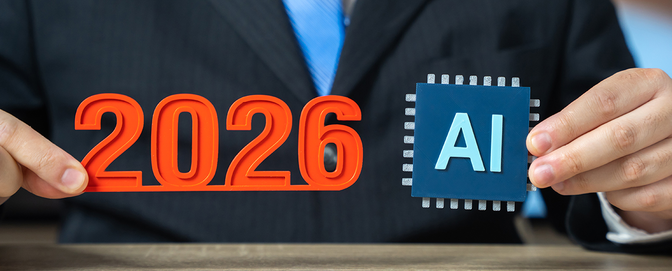
How to build a customer experience strategy framework

In today’s competitive market, great customer experience is a key driver of success. As customer expectations evolve, businesses must adapt and innovate to meet them. Large enterprises, in particular, face the challenge of delivering consistent, meaningful experiences across all touchpoints.
A comprehensive customer experience (CX) strategy framework can help overcome this challenge by aligning teams, processes, and technologies toward a shared goal of delivering customer-centric outcomes.
Marketing insights
Discover how UserTesting helps marketers refine messaging, optimize campaigns, and drive stronger customer connections.
This guide outlines the critical components of an effective CX strategy framework, actionable steps for implementation, and insights on leveraging customer feedback and artificial intelligence (AI) to deliver results.
Why is having a CX strategy important?
Investing in CX yields tangible benefits that go beyond customer satisfaction. It impacts key metrics such as revenue growth, operational efficiency, and brand loyalty. Here’s how a robust CX strategy can transform your business:
- Increased customer loyalty: Businesses that consistently deliver great customer experience foster stronger emotional connections, leading to repeat purchases and referrals.
- Reduced churn: Identifying and addressing pain points reduces customer attrition and enhances retention.
- Enhanced reputation: Meeting and exceeding customer expectations builds trust and elevates brand perception.
- Better financial outcomes: CX investments drive measurable outcomes such as higher conversion rates, improved customer lifetime value (CLV), and reduced support costs.
A Forrester study found that organizations leveraging UserTesting’s tools saw a 665% return on investment over three years, demonstrating the direct correlation between CX initiatives and business growth.
Key components of a customer experience framework
A customer experience strategy is a structured approach to designing, delivering, and refining great customer experiences. It provides a roadmap that aligns all departments toward creating seamless, personalized, and meaningful customer interactions.
The primary foundation of a successful customer experience strategy include:
- Defining objectives: Clarify what your business aims to achieve, such as increasing net promoter score (NPS) or improving retention.
- Setting measurable KPIs: Align goals with metrics like customer feedback scores, NPS, or Customer Satisfaction (CSAT).
- Leveraging tools and insights: Implement tools to capture real-time customer insights and continuously iterate on experiences.
Organizations can build on that foundation with these key components to create an actionable customer experience strategy across all teams within the organization.
Customer insights and empathy
To design great customer experiences, organizations must first understand their customers. This begins with actively gathering and analyzing customer feedback. Collect insights from multiple sources, including surveys, user testing, and customer interviews, to build a complete picture of the customer journey.
Steps to foster empathy and insights:
- Capture feedback at critical moments: Identify touchpoints where feedback can provide actionable insights, such as during onboarding or after purchase.
- Centralize data for accessibility: Tools like EnjoyHQ, a UserTesting insights hub, enable teams to store and share customer insights, breaking down silos and fostering cross-functional collaboration.
- Align feedback with goals: Use insights to shape strategies that meet operational objectives while addressing customer needs.
Strategic goal setting and alignment
Clear goal setting is essential for CX success. Goals should be specific, measurable, and aligned with broader business objectives. Consider tying goals to metrics like net promoter score (NPS), churn rate, or conversion rates to track progress effectively.
Tips for goal setting:
- Set SMART goals: Define goals that are specific, measurable, attainable, relevant, and time-bound.
- Align across departments: Ensure teams are working toward shared CX objectives to eliminate inconsistencies and siloed efforts.
- Measure success: Regularly evaluate goals and adjust based on performance and customer insights.
Experience measurement and benchmarking
Measurement is at the heart of an effective CX framework. By tracking performance, organizations can identify strengths and weaknesses, benchmark against competitors, and refine strategies.
Best practices for measuring CX:
- Track key metrics: Gauge customer sentiment using NPS, CSAT, or Customer Effort Score (CES).
- Benchmark against industry standards: Regularly compare your performance to competitors to understand where improvements are needed.
- Leverage AI for analysis: AI-powered tools like sentiment analysis and keyword mapping make it easier to identify patterns in customer feedback, streamlining the decision-making process.
Customer journey mapping
A well-defined customer journey map visualizes every interaction customers have with your brand, highlighting opportunities to improve their experience.
Steps for effective customer journey mapping:
- Identify key touchpoints: Map interactions across the customer journey, from awareness to post-purchase support.
- Uncover pain points: Analyze where friction occurs and proactively resolve these issues.
- Optimize processes: Streamline workflows to make customer interactions seamless and intuitive.
Innovation and agility
Adaptability is crucial in a dynamic market. Agile CX strategies allow organizations to implement new ideas, gather real-time feedback, and iterate quickly.
Building agility into your CX framework:
- Test and learn: Conduct small-scale pilots for new initiatives and refine them based on customer feedback.
- Embed flexibility: Ensure your processes can adapt to shifts in customer expectations or market conditions.
- Leverage AI for speed: AI tools accelerate decision-making by analyzing large volumes of data, enabling teams to act swiftly.
How to implement your CX framework
Embed a culture of customer-centricity
Creating a customer-first culture is essential for delivering great customer experiences. Empower all teams—not just CX or UX—with access to customer feedback and insights.
Actions to build customer-centricity:
- Share insights broadly: Use centralized platforms to make customer data accessible to every team.
- Foster cross-functional collaboration: Encourage teams to align their initiatives with CX goals, creating a unified approach to exceeding customer expectations.
Deploy continuous feedback loops
Static annual surveys aren't sufficient to capture dynamic customer needs. Instead, organizations should adopt continuous feedback loops to ensure customer satisfaction.
Strategies for ongoing feedback:
- Engage at key touchpoints: Solicit feedback during critical customer interactions, such as product launches or support calls.
- Integrate real-time insights: Use AI-powered tools to process feedback quickly, allowing teams to innovate and develop quickly.
- Iterate frequently: Regularly refine customer experiences based on customer input to ensure your CX strategy remains relevant.
Leverage artificial intelligence for efficiency
AI is a game-changer for a CX strategy. It enables organizations to analyze data at scale, uncovering trends and patterns that might otherwise go unnoticed.
Benefits of AI in CX:
- Sentiment analysis: Quickly identify how customers feel about specific touchpoints or experiences.
- Keyword mapping: Understand recurring themes in customer feedback to prioritize CX improvements.
- Predictive analytics: Anticipate future customer needs and tailor strategies accordingly.
Regularly reassess and adjust the framework
A CX strategy framework should evolve with your business and market conditions. Regular reviews ensure it continues to deliver value.
Tips for ongoing refinement:
- Evaluate KPIs regularly: Benchmark performance metrics like NPS and CSAT to track progress.
- Incorporate new tools and methodologies: Stay ahead of trends by adopting innovative solutions.
- Align with changing expectations: Use insights to adjust strategies to meet evolving customer expectations.
Drive meaningful business results with CX excellence
A robust CX strategy framework is essential for meeting and exceeding customer expectations. By focusing on empathy, aligning goals, leveraging AI, and implementing continuous feedback loops, organizations can create positive customer experiences that foster customer loyalty and drive business growth.
Investing in CX isn’t optional—it’s a competitive necessity. With the right tools and strategies in place, businesses can transform their customer experience into a powerful differentiator, building stronger relationships and ensuring lasting success in a rapidly evolving market.
The future of great customer experiences begins with a structured, customer-focused framework.

Unlock your customer insight ROI
Discover the hidden ROI of your customers' insights. Book a meeting with our Sales team today to learn more.





